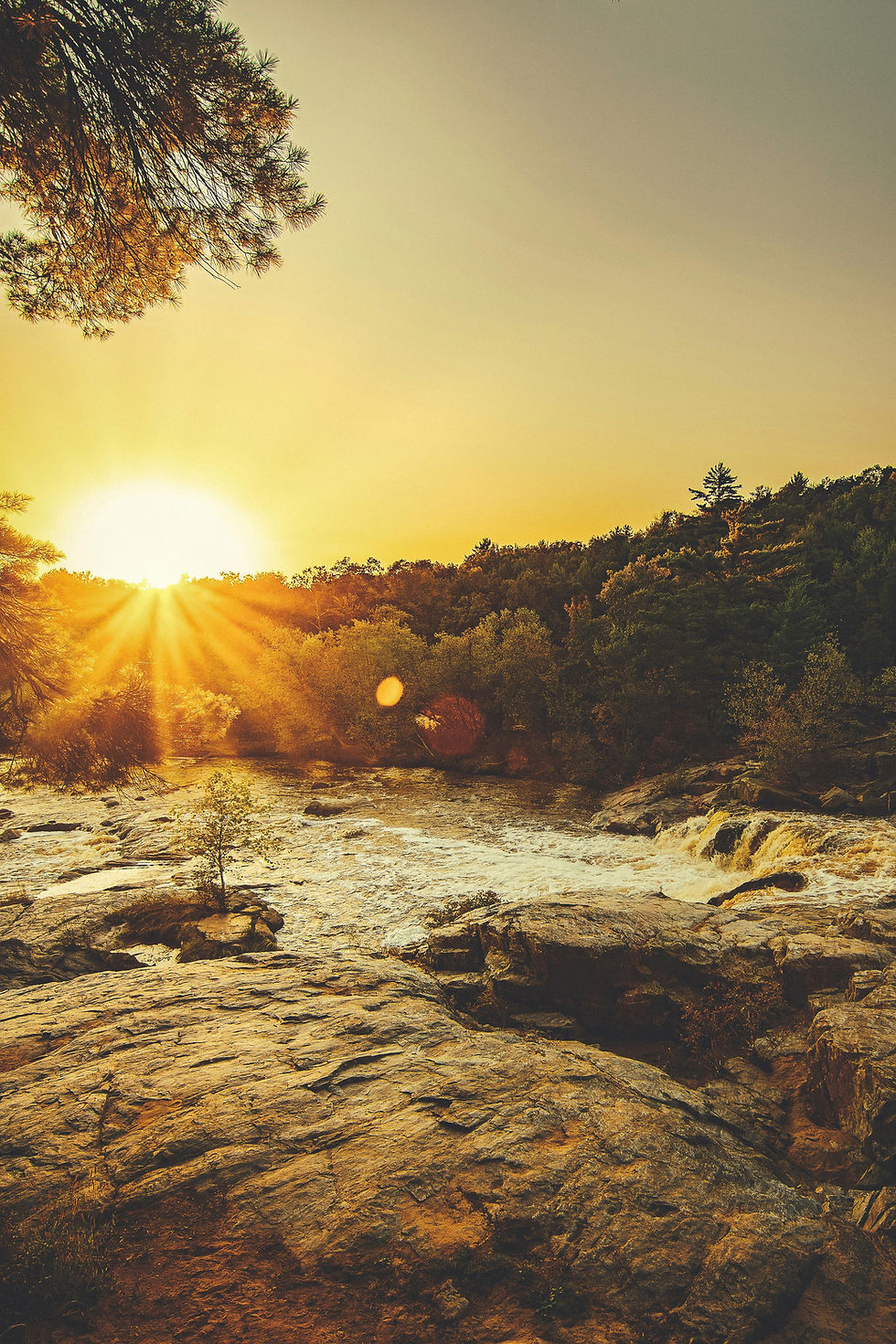What can we learn from the Ainu people?
- Keneisha Bennett

- May 16, 2022
- 3 min read
This article is a brief look at the Ainu people. It seeks to bring to the fore the core of the Ainu and how that can be applied to present-day society. How can we adopt parts of their belief system to help us live as one with the environment?
Who are the Ainu people?
The word Ainu is Japanese for ‘human’ and the Ainus are the indigenous people of northern Japan. There are various theories surrounding their origins, but the truth remains unknown. What we do know is that they are associated with the Kurile Islands and Sakhalin, and the Ainu people now mostly live in Hokkaido. Though they are indigenous to Japan, they have a distinctly different language from Japanese and a culture that was reportedly seen as inferior in Japan, which resulted in the complete suppression of a people and near extinction of said culture and language. Their lands were taken and their livelihood compromised.
[Fortunately, the Ainu people survived their oppression which allows the rest of us to learn the wisdom from their ancient beliefs.]

What did the Ainu believe?
The Ainu didn’t have a written language, so their history and culture were passed on orally from generation to generation. From what is now recorded, it is ubiquitously noted that the Ainu traditionally practiced an “animistic and polytheistic faith that recognizes a spiritual power within all things.” They believed that all things are inhabited by spirits known as kamuy. With this belief that the kamuy are everywhere and are always watching over humans, the Ainu always showed respect to not just people but animals and plants alike through prayer and treatment of the dead; even a fishbone was treated with respect. They acknowledged ramat, which is the “sacred life force…housed within each living being, natural force, and object in the world.” The ramat is believed to return to its kamuy once the ‘body’ it is housed in dies, and the belief is that the kamuy will return as long as people are grateful for this gift and treat it with respect.
The relationship between humans and nature continues to be a guiding philosophy of the Ainu people. “This belief allowed earlier people who lived in a deep relation with nature, to obtain the things they need for their lives.” They were a hunter-gatherer society that took from nature only what was needed. They recognized the need not to abuse natural resources but instead respect nature and ensure its sustainability.
The Ainu people also engaged in shifting agriculture. Shifting agriculture is an excellent way to preserve soil fertility and allow land to regenerate. Even in today’s society, it is not actively practiced, and if it is, often not until the land has been completely exhausted. The Ainu recognized the importance of land regeneration and did what was necessary to ensure proper and sustainable use of lands.
The relationship between humans and nature continues to be a guiding philosophy of the Ainu people today.

So, what can we learn from the Ainu?
Having looked at the Ainu’s culture and religion and also listened to them share their stories in a documentary film by Dr. Kinko Ito, a professor of sociology at the University of Arkansas at Little Rock, here are a few things we can learn from them:
Acknowledge man’s relationship with nature and the role we each play.
Respect for life, nature, and all things around us.
Appreciate the natural world and live at one with it.
Nature is not meant to be exploited, and we should take only what is needed to survive so as to prevent biodiversity loss and other irreparable harm.
Use nature and ensure it remains sustainable, do not abuse it.
If you show little respect for life and nature and cause it harm, you are inadvertently causing harm to yourself (because the kamuy will one day return and treat them in the same way).
So, like the Ainu, let us show respect to and co-exist with nature. Let’s acknowledge and appreciate the gifts we have been given. An ancient Ainu proverb says, “Kanto-orowa-yaku-saku-no-arankep-shinep-ka-isam,” which means “Everything in this world has a role to play.”
While presenting at The Thirteenth Session of the United Nations Permanent Forum on Indigenous Issues (UNPFII), Oren Lyons said, “each has duties that keep the rest of creation in a reciprocal balance. Humans are, but a part of the natural world, and Mother Earth is a relative, not a resource.”
Let’s treat it that way.
RESOURCES
The Ainu: Reviving the Indigenous Spirit of Japan. Retrieved from: https://www.tofugu.com/japan/ainu-japan/
TOTA. Ainu Belief. Retrieved from: https://www.tota.world/article/853
Hokkaido’s History, Culture and Nature – Ainu Culture. Retrieved from: https://www.akarenga-h.jp/en/hokkaido/ainu/a-03/
Poisson, B.A. (2002). The Ainu of Japan. Minneapolis: Lerner Publications. Retrieved from: https://archive.org/details/ainuofjapan00pois/page/n5/mode/2up
Have You Heard About The Ainu? Elders of Japan's Indigenous People Speak (documentary)
THE AINU - REVIVING THE INDIGENOUS SPIRIT OF JAPAN
Experience the Ainu World, Living in Harmony with Nature



Comments